Welcome to the Imperial Archives! The main source of information in the Galactic Empire. Be sure to check out the Editing Protocol before making new pages or editing articles. If you need help feel free to contact the Archives manager at archives@swc-empire.com !
Vuma System
 This article is UNDER CONSTRUCTION. Please come back later.
This article is UNDER CONSTRUCTION. Please come back later.
| Vuma System | |

| |
| Sector | Kuat Sector |
| Galactic coordinates | 37,49 |
| Planets | 3 |
| Moon | None |
| Asteroid Fields | None |
| Space Stations | 6 |
| Population | Approx. 1.1 billion |
| Controlled By | Galactic Empire |
Return to Kuat Sector
The Vuma System is one of the seven systems of the Kuat Sector. Once a stop off on the old Corellian Run, Vuma's planets are rich with minerals and ore, and combined have a population of over a billion people. Cold is how most would describe the Vuma System. Frozen tundra and remote mining stations are keys to Vuma's wealth. Huge deposits of Duracrete and Meleenium, are just a couple of the many minerals that are littered across the three planets.
Contents
Early History
The Vuma System, due to its sub-zero temperatures was often overlooked in the early days of the galaxy timeline. As the Galactic Republic fell and the Sepratists gathered strength, Vuma's rich resources became a supply target for many. The Trade Federation initially setup large outposts set deep in Vuma I's snow covered hills to monitor Republic activity, due to Vuma's proximity to Coruscant. The Trade Federation was able to use high powered ion cannons to blast Republic trade ships trying to navigate through the system. Those trade ships were usually looted by other Separatists who were not as well supplied as the Trade Federation. An era of scavenging was brought about and mixed signals to the outposts on Vuma I eventually forced them to a close.
The Vuma System set idle and neutral for many years. As the Galactic Empire was in it's early stages of development by emperor's such as Hiram Drayson and Vodo Bonias, Vuma went unnoticed during the Imperial Civil Wars. Once Piett came to power, the system's usefulness was once again realized. The Galactic Empire sent a small fleet of bulk freighters to Vuma III. A massive amount of mines were constructed and ordered to stockpile the rich minerals on the planet.
The Vuma System started to grow rapidly due to the influx of workers. Many families built small homes on the planet Vuma and commuted to work at Vuma III's mines. The Galactic Empire saw a chance for development on the planet Vuma and built high rises to house the growing mining families. The rent from the high rises, over time more than paid for their own construction costs.
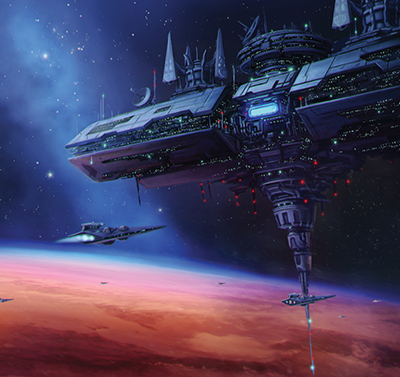
|
| Golan Defense Station |
As the mining operation grew, Kuat Drive Yards began to source much of it's materials directly from the Vuma System due to its proximity. This "partnership" created a boom in the system's economic importance. Immigrants from other systems pored into the Vuma System to take advantage of the mining jobs available. Once the planet Vuma began to grow considerably, independent businesses and entrepreneurs setup shop, opening restaurants, shopping complexes, casinos, and more. Since the industrial sector of the system was limited to mostly Vuma I and Vuma III, the planet Vuma retained it's natural beauty and cleanliness. This eventually made the planet desirable for wealthy Imperial citizens looking for escape from the larger and more developed planets, such as Coruscant and Corellia.
The Vuma system also became home to a Luxury Space Colony. Many use this colony as a meeting point or trading post when dealing in the construction and purchase of starships from the nearby Kuat Drive Yards, porting their ships there before sale. The comforting surroundings tend to help ease buyers into the idea of owning a new ship. The box style design of the station allows for large and luxurious living space and the wealthy citizens of planet Vuma were believed to be the reason for its inception.
With the wealthy now influencing political change in the system, Vuma's security became a hot topic. The Galactic Empire realized that it needed to start protecting its resources and citizens from potential hostiles, so it built defense platforms in the four corners of the system. Their construction would not only develop a military presence to the system, but provide a direct link back to Coruscant, where the system could be monitored and managed.
Much has changed in the Vuma System since the early years, but the system remains economically important for the Galactic Empire. Like most systems in the Core Worlds, the planets are torn between the working and wealthy classes.
| Name | Position | Type | Size | Population |
|---|---|---|---|---|
| Vuma | 6, 8 | Cold/Breathable | 12x12 | 1,120,608,338 |
| Vuma I | 13, 10 | Cold/Breathable | 7x7 | 44,873,541 |
| Vuma III | 9, 4 | Cold/No Atmosphere | 5x5 | 1,027,827 |
Vuma
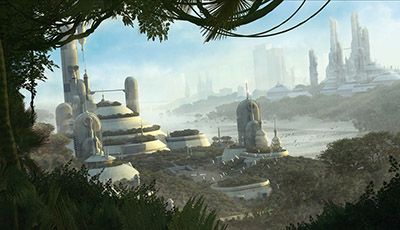
|
| Vuma during its short summer month |
A heavily forested surface brings some relief to the colder temperatures that run rampant on the planet. Vuma, due to its weather tends to have slightly lower than average oxygen levels, making living on the planet an adjustment for newer settlers. The planet also boasts a few bodies of water, which have become a tourist attraction for the area due to their ability to resist freezing over in the colder temperatures. Many can even find spots in which hot springs have been formed through small cracks in the molten core, allowing steam to rise and heat the water.
The planet has a standard four seasons. Winter is abnormally long and takes up close to 50% of the year, while Spring, Summer and Fall seasons divide what is left, summer only comprising a month of that time. Northern winds make winter city life in Vuma difficult for many who yearn for fresher air. The small cities that have developed around the natural waters of the planet are interconnected with tunnels and enclosed walkways to protect its citizens from the rough climate.
Those familiar with the natural hot springs, flood to the bodies of water and surrounding forested areas during the short warmer months. Even during the warmer months of the year, such as summer, it only reaches a cool 50 degrees fahrenheit, making the springs a must for those seeking outdoor adventures.
Early Culture & Society
The culture of Vuma started out very sparse. Many didn't see the planet as a desirable place to settle and it was only populated with small tribes of nomads who moved based on fish migrations in the planets bodies of water. Early, during the Galactic Republic reign, Vuma was consistently overlooked. The planet's surge came in later years after the Galactic Empire began to solidify its foundations. Once Vuma I and III started to gain recognition for their rich resources, the planet Vuma saw a increase in the migration of many mine worker families. At first, this was a small influx of population. The mining towns that developed were poor and gave little shelter or protection from the harsh winter months.

|
| Mining Family Slums |
The families that settled on Vuma often struggled to live due to the ever changing supply of food. Some faired better than others, usually nomadic families that were native to the planet, were able to source out food from nearby waters. The rest nearly starved as a special mining credit system was placed in effect by the Galactic Empire to keep the population from seeking better employment. The Empire built a system in which all mining families were paid with Mining Credits. These credits differed from standard galactic credits, because they could only be spent in sanctioned Imperial supply stores and were mostly worthless in the actual galactic trade communities. This allowed the Empire to surge prices, keeping the workers in the mines from prospering so much that they could stop working. This ensured that the mines always had a consistent workforce, but soon led to revolts.
Vuma Mining Revolts
Starving and with poor working and living conditions, many mining families started meeting in secret, forming an anti-Imperial movement. The Mining Credit system was putting too many constraints on the local population. One mine task leader by the name of Joren Sortken quickly became the voice for the movement. He started organizing small strikes and walkouts to try and gain notice from the local Imperial bureaucracy. This was a dangerous bet in the beginning, with many families already struggling to survive, the fear of more trouble kept early strikes to small numbers. Frustrations followed as Imperial politicians seemed to ignore the current state of its workforce and refused to make changes or amendments to the Mining Credit system.
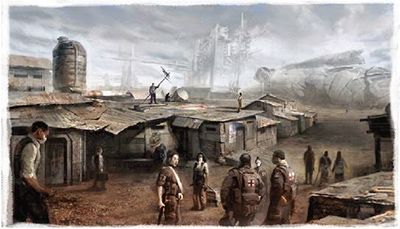
|
| The formation of the mining revolt. |
Joren was able to eventually find numerable families to agree to stockpile minerals gathered in the mines offsite away from their Imperial overseers. This only went unnoticed for so long, when the output of minerals began running under the normal monthly averages. Local Imperial authorities began inflicting harsh punishments for families who were not meeting monthly quotas. Ration and credit reductions were the first punishments implemented in an already poor and starving community of workers. Once physical punishments, such as public beatings and banishment into the harsh wilderness to starve, were enacted, Joren's influence became complete. Through unanimous support, he was able to band many of the mining families together in one large revolt against the local Imperial authorities.
The overwhelming odds of the local population versus the small Imperial outpost meant a sweeping victory for Joren and his uprising. With this embarrassing defeat, the Empire now knew the seriousness of the situation at hand and put plans in place to deal with it swiftly. Emperor Mccarthur dispatched multiple stormtrooper regiments to the system. The families fought hard and were surprisingly tough, hardened by the years of physical labor and harsh climate. Joren led his forces in a last ditch effort to make an example of the Empire's, as he put it, "Choking grip on the throat of the working class." He was not successful. The seasoned Imperial veterans made short work of the local miners and Joren was killed in battle. His remains were quartered and placed on display in strategic areas of the mining towns as an warning for what happens to enemies of the Empire.
Aftermath: A New Beginning
Most families were forced back to work, but Emperor Maccarthur wanted to avoid any future revolts and dissolved the mining credit system allowing Vuma to prosper under Imperial rule. Once the Kuat Drive Yards began sourcing its materials from the system, Vuma grew rapidly. The involvement and management by the local Imperial beauaracy improved, by building a beautiful city surrounded by lush forest and sparkling waters. The old mining slums slowly disappeared as mining families were now able to invest in better homes and different business opportunities. Due to the impressive cleanliness of the communities and with most of the industrial sectors based on Vuma I and III, the planet Vuma became an attraction for wealthy Imperial citizens looking for escape from larger city hubs.
With wealth comes growth. Wealthy business owners and industry leaders setup shop on Vuma, to take advantage of the planet's beauty despite the harsh climate. Vuma I became a popular skiing destination and Vuma was the perfect place to build grand lodges for vacationing Imperials. Casinos and shiny luxury condos gleamed though the snowy winter months. With the nearby Kuat Drive Yard's in such close proximity, merchants used Vuma as a way station between trade transactions, taking advantage of the growing number of luxury good shops and fine dining establishments.
With the growth of the wealthy population, Vuma also saw the gap between the rich and poor widen by a considerable margin. Many poor mining families, who weren't able to take early advantage of the growing markets were forced to resettle on the even harsher planets of Vuma I and III.
Vuma (I)
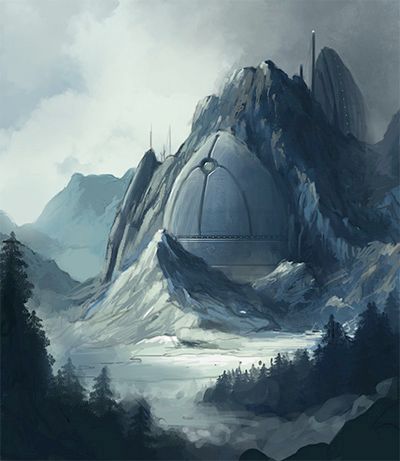
|
| Vuma (I) city built into the side of a glacier |
Vuma (I)'s surface is made up of mostly icy terrain except where volcanic fissures have opened up in a centralized location on the planet, depositing rock and minerals in darker patches on the glacier plains. A few mountain ranges have formed over time in the ice shelves jutting from the ground.
Colder than planet Vuma, the daytime temperatures are still slightly manageable but the nighttime drops considerably, making it difficult for anyone to brave the elements for extended periods of time without freezing to death.
A Outpost World
In the early days Vuma I was void of inhabitants. The Trade Federation soon setup small outposts in the icy shelves of the planet. These outposts served to monitor the activity of the Galactic Republic during the long years of the Clone Wars. After most of the Separatists had been defeated and with the Trade Federation scattered and losing strength, the outposts were soon abandoned and sat uninhabited for years. Through the slow foundational development of the Galactice Empire and as Vuma III became important for its rich mineral's, Vuma I gained notice from a small religious group called the Arkarath.
Having fled from persecution on Coruscant for what was called blasphemous and anti-Imperial ideals, the Arkarath soon settled into an abandoned outpost on Vuma I. The religious sect was able to brave the remote outpost through family ties on Coruscant, which kept it afloat during its early inception. Siri Tarsk was the head of the movement, who was said to be in tune with the Force, drawing on it's power to extend the lifelines of its few members. The Arkarath wasn't a well known religious movement. Most believed it to not even exist and those who do believe, say it was only a small band of fanatics led by a force sensitive witch. The Arkarath used the abandoned outpost as a lure for fledgling immigrants. With the Galactic Empire still in civil war, with no real grip on the galaxy, many seeked an answer to a galaxy in turmoil. The Arkarath would recruit new members into their so-called religious order, initially giving them hope and a sense of belonging, but only to slowly sypher away the little they had, for their own use and gain. This allowed the Arkarath to survive even after the last of their families were forced from Coruscant.
Strange dark rituals and even cannabalism were just a few of the disturbing rumors that surrounded the lore of the Arkarath. One survivor, a young Bothan by the name of Charn Vorn recorded his encounter and survival in a small memoir, which was shortly popular among Coruscanti youth.
| |
| Artist depiction of Siri Tarsk |
Arkarath: A Memoir of Survival by Charn Vorn (Chapter 6 Excerpt)
...I was excited. I couldn't believe that my initiation into the order was coming so soon after my recruitment. Siri was a power to behold. She commanded so much respect with so little effort. Just her presence was intoxicating. You could sense an energy coming from her, which, till this day I can't explain. It's as if her body was only a vessel for her spiritual being. I'd seen her many times throughout my introduction to the sect, but never for an extended amount of time. She was like a ghost, whipping in an out of rooms, sometimes you swore she was only a shadow.
I'd heard about the Akarath through a co-worker after a few rounds of ale on Coruscant. It sounded too good to be true. I needed to get away from the city. The civil war was tearing the economy apart and it made it more and more difficult to find steady work. Even the upper class was suffering. I'm surprised they stayed as long as they did. If I had the money I would have escaped a long time ago to a much warmer and luxurious environment. Yet, there I was. I was lucky enough to find passage on a ship that was making its way to another sector. The Empire had put huge restraints on ships coming and going from Coruscant. When I heard of a small freighter making a supply run to Vuma I, I felt it was my last ditch effort at belonging to something new.
My initiation was to be second in line that night. Fires roared throughout the Hall of Gathering as I watched in horror at the initiate being roasted alive and his flesh torn from his body. My faith in everything drained from my body and I was frozen in time. It wasn't until they all turned their attention to me that I realized my fate would be similar. I had been deceived. So, I ran. I ran as hard as I could and as fast as I could, still not believing how quickly things went from good to bad. I can still see the dark cloud bursting through Siri's body in my nightmares. It was unlike anything I'd ever seen and I knew if I stopped running it would be me upon that alter, betrayed into thinking I was going to be accepted into the Arkarath fold...
Playground for the Rich
Years after the Arkarath became legend and the Galactic Empire licked its wounds from the Imperial Civil Wars, planet Vuma's wealthy started looking for entertainment. Vuma I soon became a popular destination. It's snow laden terrain and simple mountain ranges were perfect conditions for leisurely skiing. Huge ski lodges were built on the planet Vuma and regularly scheduled transports to Vuma I's ski trails became commonplace during the winter months.
Warming Huts as they were called, but more like small palaces, were built using the former Arkarath outpost. These "huts" provided visitors with ample live entertainment and rich exotic foods. Hosts entranced their customers with stories of the Arkarath and the terrible rituals performed in the very halls in which they ate. No one knows what happened to the Arkarath. There are many rumors that they died out, while others believe they dug themselves deeper underground and are still active below the very floors, which entertain the rich and famous.
Vuma III
Vuma (III) Is a stark and barren planet, made up of rock and craters. No atmosphere exists on the planet and many would argue that if it didn't orbit the nearby sun, it would almost be considered a moon. Duma III is best known for its rich minerals, which supply the Galactic Empire with materials for building its vast cities and starships. The local Kuat Drive Yards also gather much of its mineral from the planets surface.
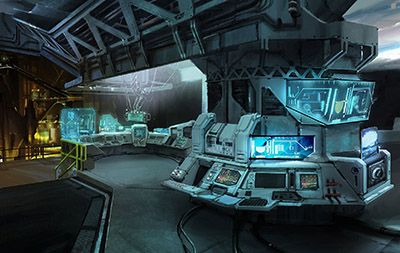
|
| Syphon-Class Research and Development Station |
Orbiting Vuma III is a Syphon-Class Research and Development Station, which houses a state-of-the-art computer database center. The database keeps track of incoming supplies, newest developments, and a vast amount of knowledge rivaling most libraries. One of its principal dedications is the modification of starships and weapons. This is a great advantage so close to Kuat Drive Yards. The scientists toiling away in the bowls of the station are looking for ways to add an extra boost to speed on fighters, increase power to weapons on capital ships, increase armor on vehicles, and even increase ammunition capacity on weapons.
Research stations such as these are the life blood of the Empire's mission to keep advancing it's military technology and dominate the galaxy. Scientists work around the clock to ensure that the Imperial forces continue to strive to new heights. This proven track record means that only the top scientists may qualify for service aboard such stations. Intelligence combined with hard work and diligence through the Ministry of Industry.